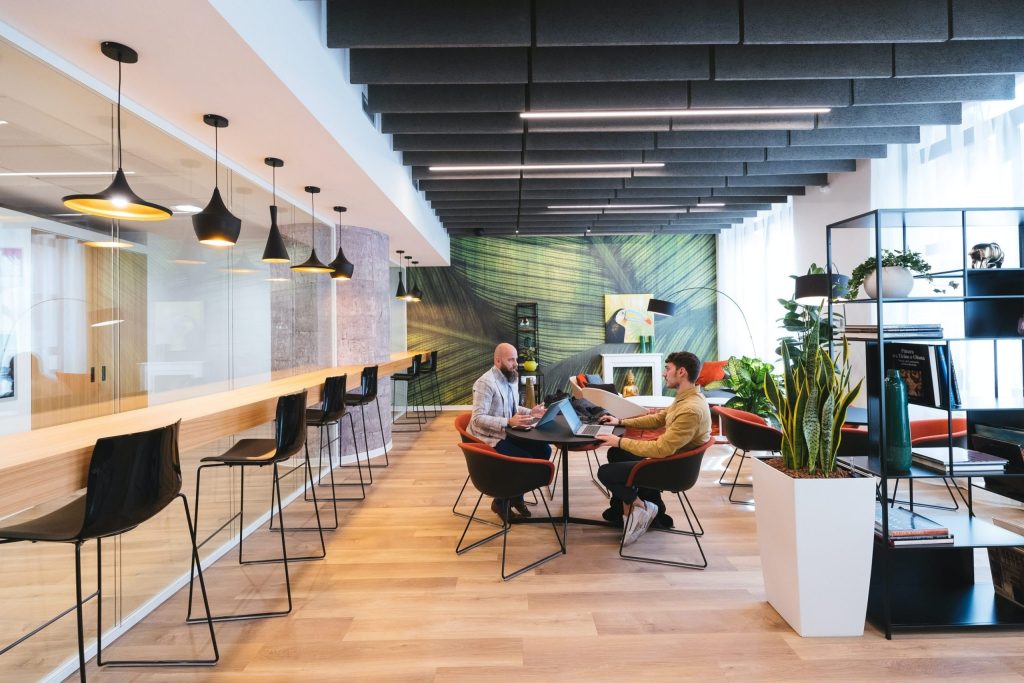In the wake of the COVID-19 pandemic, the traditional office landscape has undergone a profound transformation. With the widespread adoption of remote work, organizations have been forced to reevaluate their office spaces and rethink how they can best support a hybrid workforce. This article explores the future of office spaces in the context of the evolving hybrid work environment, offering insights and expert guidance on the key considerations for designing workspaces that meet the needs of the modern workforce.
The Evolution of Hybrid Work
Embracing Flexibility
The concept of a hybrid work environment has gained momentum as companies recognize the benefits of offering employees the flexibility to work from both home and the office. This shift has necessitated a reimagining of office spaces to cater to the diverse needs of a hybrid workforce.
Balancing In-Person and Remote Collaboration
One of the critical challenges organizations face is striking the right balance between in-person collaboration and remote work. Effective office design should encourage collaboration while providing space for focused, solitary tasks.
Designing for Hybrid Success
Creating Collaborative Hubs
The modern office should prioritize collaborative hubs that facilitate face-to-face interactions. These spaces can include open meeting areas, project rooms, and communal lounges, fostering creativity and team cohesion.
Emphasizing Flexibility and Mobility
Flexibility is key to accommodating the dynamic needs of a hybrid workforce. Incorporating movable furniture, adjustable workstations, and modular layouts allows employees to customize their workspace based on their preferences and tasks.
Integrating Technology Seamlessly
To support remote collaboration, offices must seamlessly integrate technology. This involves equipping meeting rooms with video conferencing tools, ensuring high-speed internet connectivity, and providing ergonomic hardware for remote workers.
The Importance of Well-Being
Prioritizing Employee Well-Being
The physical and mental well-being of employees should be at the forefront of office design. Incorporating elements like natural lighting, ergonomic furniture, and dedicated spaces for relaxation can enhance the overall workplace experience.
Hybrid Work and Work-Life Balance
With the blurring of boundaries between work and personal life in a hybrid work environment, companies should offer resources to help employees maintain a healthy work-life balance. This includes flexible scheduling and wellness programs.
Sustainability and Green Initiatives
Eco-Friendly Office Design
Sustainability is no longer a buzzword but a necessity. Green office design, including energy-efficient lighting, recycled materials, and indoor plants, not only reduces environmental impact but also boosts employee morale and productivity.
Commuting Alternatives
Encouraging alternative commuting options, such as biking or public transportation, can reduce the carbon footprint of office employees. Providing bike racks, showers, and electric vehicle charging stations can incentivize sustainable commuting.
Data-Driven Decision Making
Leveraging Analytics
To optimize office spaces, companies can use data analytics to track space utilization, employee preferences, and productivity metrics. This data-driven approach enables informed decision-making and continuous improvement.
Adapting to Changing Needs
Office design should not be static. Regularly reviewing data and feedback allows organizations to adapt their spaces to changing needs and evolving work patterns.
The Future of Office Spaces
A Hub for Collaboration
The future of office spaces lies in their role as hubs for collaboration and innovation. While remote work is here to stay, offices will continue to play a vital role in fostering company culture, creativity, and interpersonal connections.
Customized Work Experiences
Personalization will be a driving force in office design. From adjustable desk heights to temperature control preferences, employees will have the tools to create a workspace tailored to their individual needs.
Supporting Employee Growth
Forward-thinking companies will invest in creating environments that support employee growth and development. This includes dedicated spaces for training, mentoring, and skill-building.
Conclusion
The future of office spaces is exciting and dynamic, with a focus on adaptability, well-being, sustainability, and data-driven decision-making. As organizations embrace the hybrid work model, they must prioritize the creation of spaces that empower employees to excel, collaborate, and thrive in a rapidly evolving business landscape. By reimagining office spaces with these principles in mind, companies can position themselves for success in the era of the hybrid work environment.
